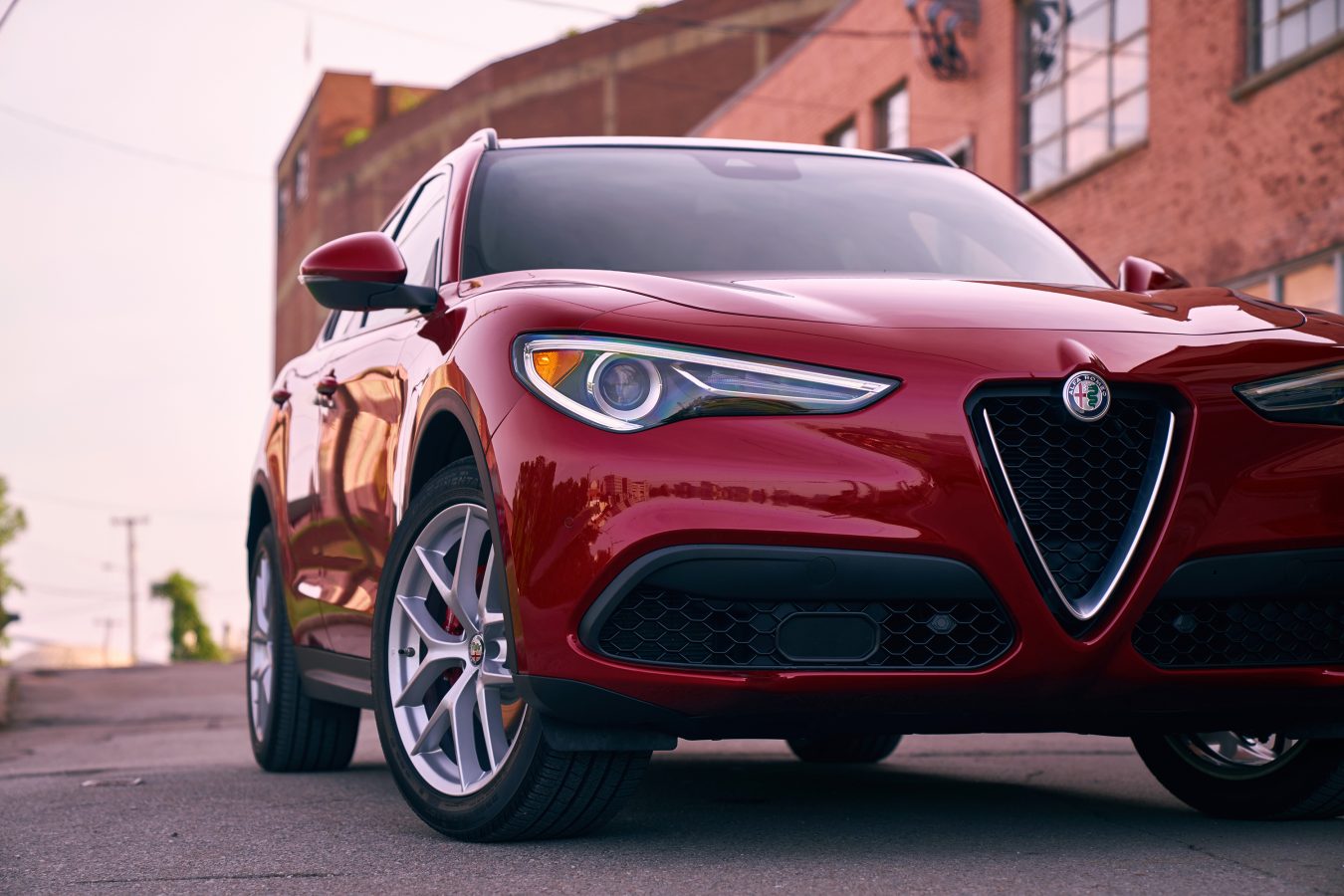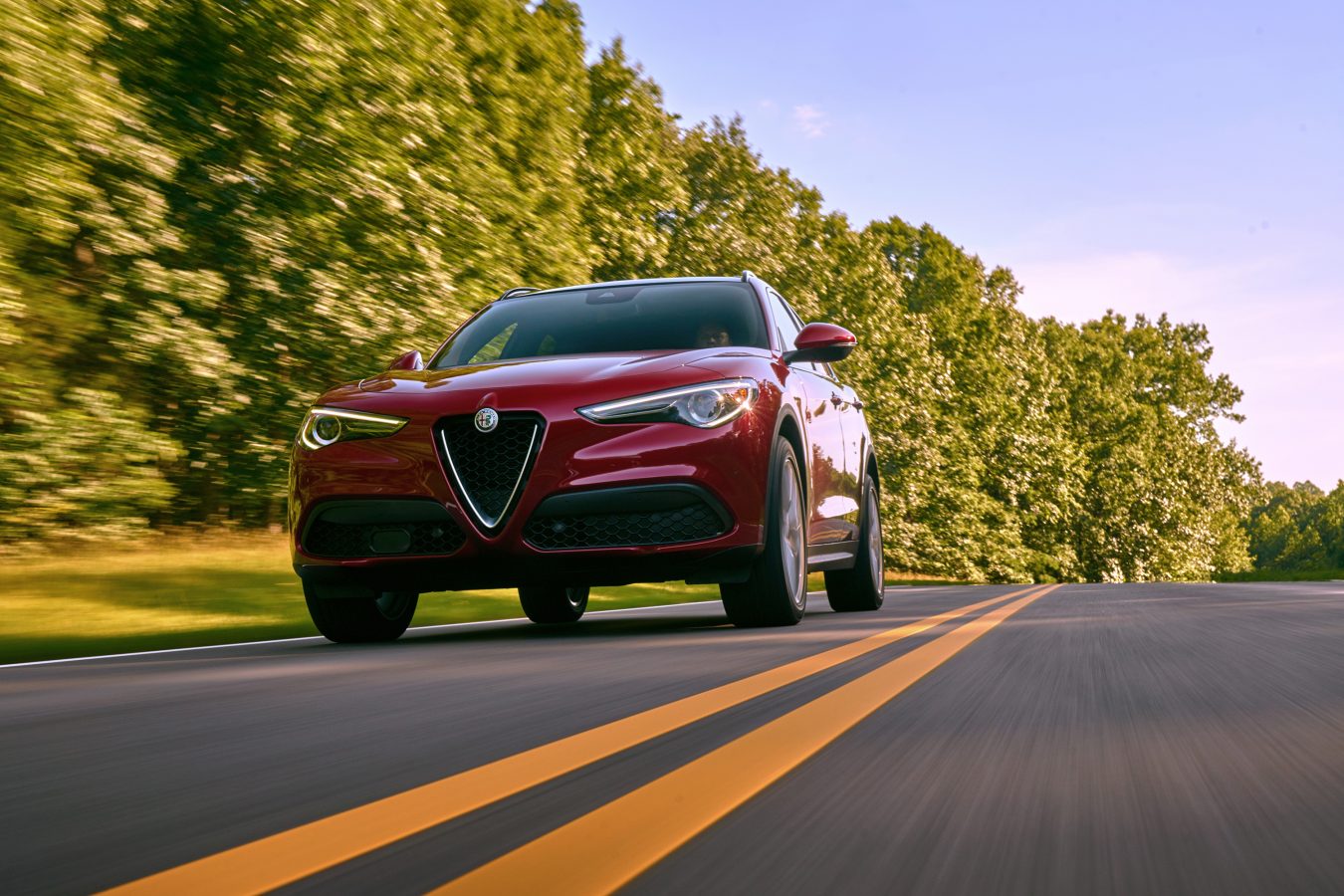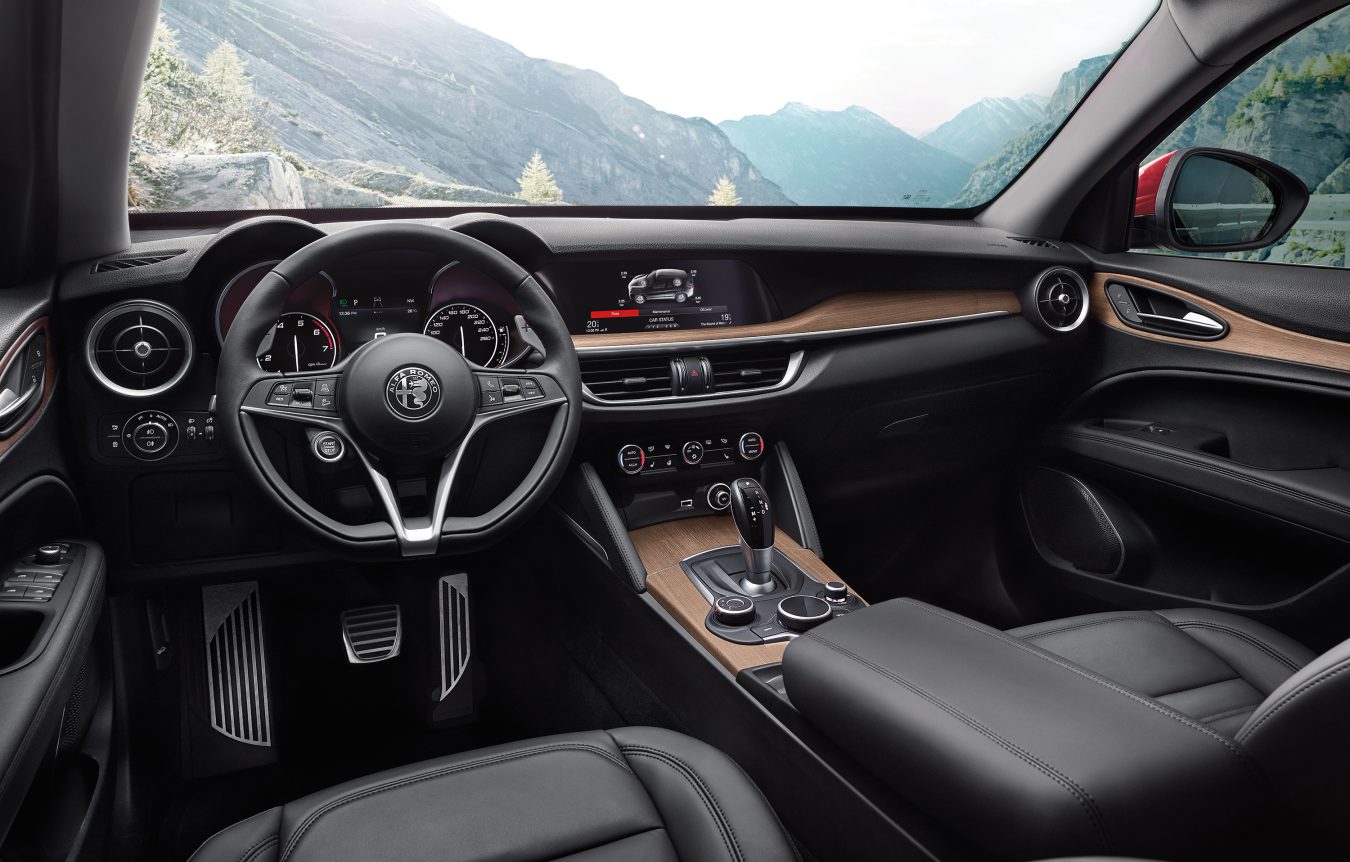If shopping for an SUV has left you longing for something with a little less stoicism, the solution might just be a touch of Italian exuberance.
The arrival of the Alfa Romeo Stelvio marks yet another first foray into SUV production by a luxury marque. Invoking the name Chrysler in its parent company’s ownership might lead one to believe there is little of Italy left in the Alfa Romeo brand; however, as it is overseen by the Italian subsidiary of Fiat Chrysler Automobiles headquartered in Turin, Alfa Romeo’s century-plus of Northern Italian heritage and motorsport legacy are in suitably respectful hands.
The Stelvio earns its name from the famed Stelvio Pass, which traces immediately south of the Italian border with Switzerland and demands that drivers navigate its 48 hairpin turns through the second-highest mountain pass in the Alps, leading it to be widely considered one of the best driving roads in Europe. It’s a fitting name, then, for a car that performs better the harder it’s pushed.
Two powertrains are available for the Stelvio. In the top-of-the-line Quadrifoglio model—which also comes with exclusive active air intakes, quad chrome exhaust tips, carbon fibre trim elements, unique performance front seats, two unique steering wheel options, and red or green and white interior accent stitching, among other features—the engine is an all-aluminum 2.9-litre twin-turbocharged V6 that creates a remarkable 505 horsepower and 443 pound-feet of torque between 2,500 and 5,500 revolutions per minute.
The other models—meaning the Stelvio, Stelvio Ti, and the sport iterations of each—are fitted with a two-litre turbocharged four-cylinder engine, also all-aluminum, that makes 280 horsepower and 306 pound-feet of torque between 2,000 and 4,800 revolutions per minute, which are still very respectable power figures for this segment.
All models come equipped with an eight-speed ZF automatic transmission, and most include aluminum steering-column-mounted paddle shifters. In Canada, every Stelvio comes with Alfa Romeo’s Q4 all-wheel drive, which sends the entirety of the engine’s torque output to the rear wheels until extra traction is needed, in which case the front axle can receive up to 60 per cent. For added traction control, a mechanical limited-slip rear differential can be added to Ti models by getting the performance package, and Quadrifoglio models come with a torque vectoring differential as standard.
At lower speeds, the Stelvio Ti Sport (the model that this writer spent some time with) feels very forgiving in the steering, and relaxed in throttle response and ride quality. However, with dynamic mode engaged, the car’s entire drive feel tightens noticeably—throttle response and gearing become more assertive, the variable-speed steering sensitivity tightens, and handling becomes more agile as the supportive front seats grip through tighter curves. This is all a pleasant side effect to the Stelvio’s unmistakably stylish appearance, which extends from the Alfa Romeo signature heritage triangular scudetto grille, cat-like headlights, and crouched stance that leaves it looking ready to pounce, through to the inside, where available genuine wood trim sets against clean, uncluttered lines and symmetry accented with fine leather.
The 8.8-inch infotainment screen is the largest size available and feels small relative to the rest of the dashboard, which can make it challenging to work with at times, particularly while driving. It does, however, come with both Apple CarPlay and Android Auto as standard, and can be paired with an optional 14-speaker Harman Kardon sound system, which would help mask the wind noise that creeps into the cabin at highway speeds.
All in all, the Alfa Romeo Stelvio offers an option that, true to its Italian roots, unabashedly stands out.












